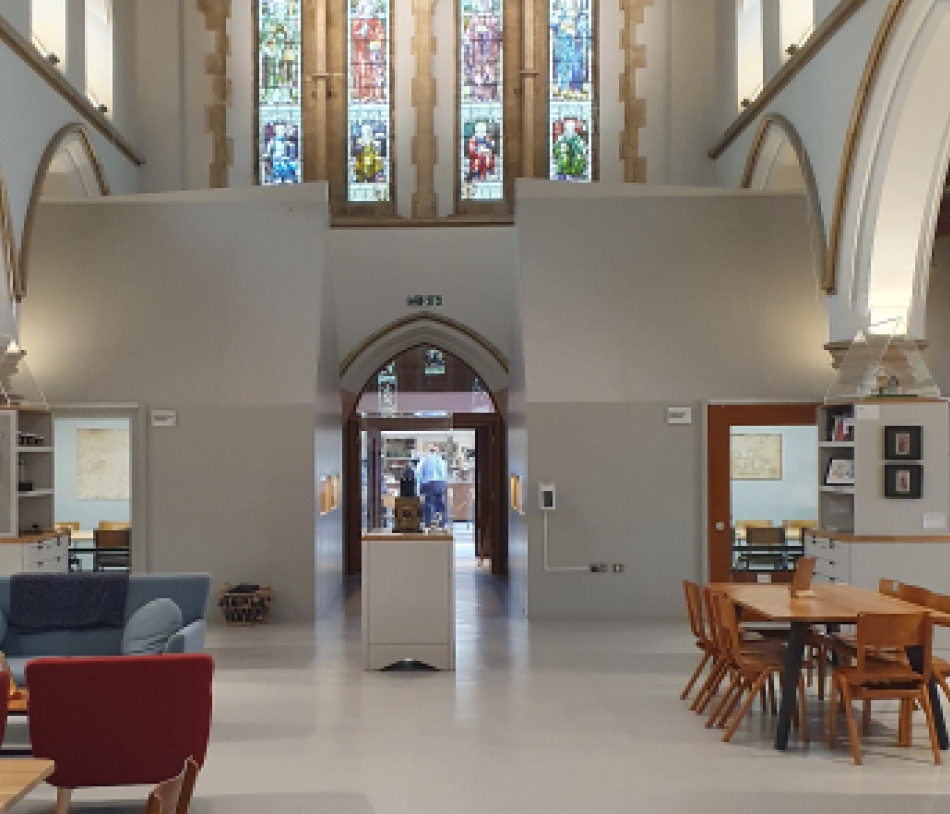Written by:
Over the past two decades, The Glass-House has worked with hundreds of community-led design projects. With each, we have championed design quality and done our best to help the groups we have worked with to be confident, demanding and aspirational in their design journeys. And we have seen some fantastic examples of community-led projects that have brought together form, function and feeling to produce buildings and spaces that not only work, but also nurture and inspire those who use them. We would argue, and many of these communities have demonstrated this very clearly, that empowering communities in design does not have to mean dumbing down design.
Last month I visited Chichester Community Development Trust (CCDT), which looks after 15 assets across a number of sites, including Graylingwell Chapel and other buildings on the site of the former Graylingwell Hospital. It is a site that has undergone significant development over the last two decades, with the injection of new homes and community facilities. Chichester Community Development Trust owns and manages buildings and land on the Graylingwell site, safe-guarding these important spaces, as well as sites at Keepers Green and Shopwyke Lakes, for the benefit of local communities across the whole of the Chichester District.
We first met this group back in 2017, when a delegation from CCDT took part in our Buildings by Design training course, offered through our Empowering Design Practices research project. At that time, CCDT were working on the design for the refurbishment of Graylingwell Chapel.
A lot has happened since then.
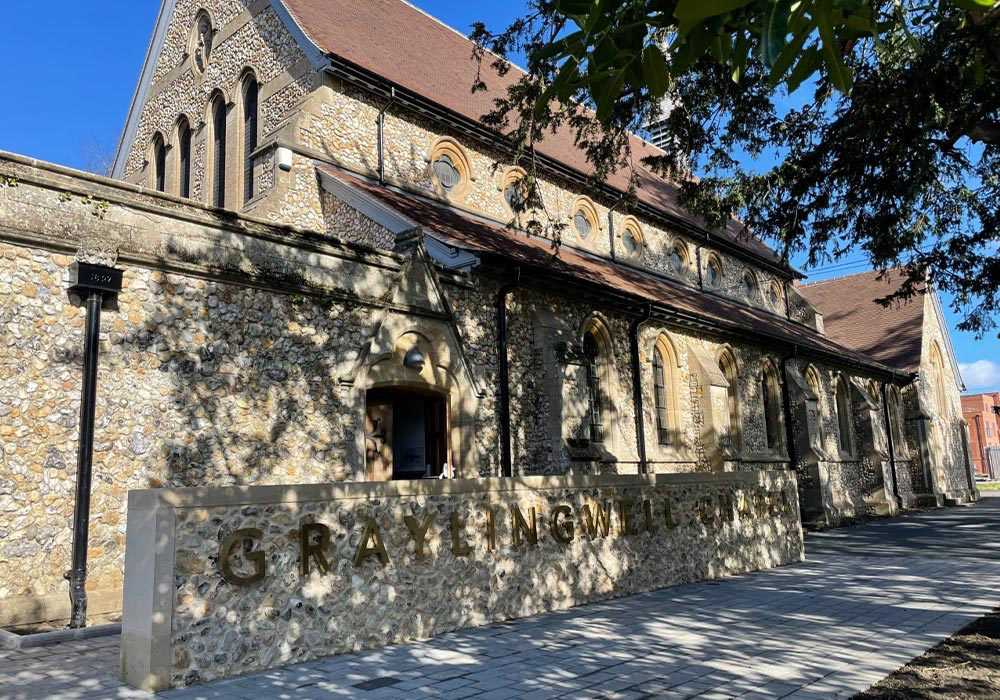
As well as refurbishing, extending and formally reopening the Graylingwell Chapel as a community facility, CCDT has set up a community cafe and wellness centre, a nursery and sports pavillion, a family services building and have plans afoot for a community brewery, creative hub and a space for young people.
The CCDT team very kindly showed us round the whole site and as well as being generally impressed with everything they have achieved, I was particularly impressed with the quality of design at every level. Here is just a snapshot of what stood out to me in terms of their design excellence.
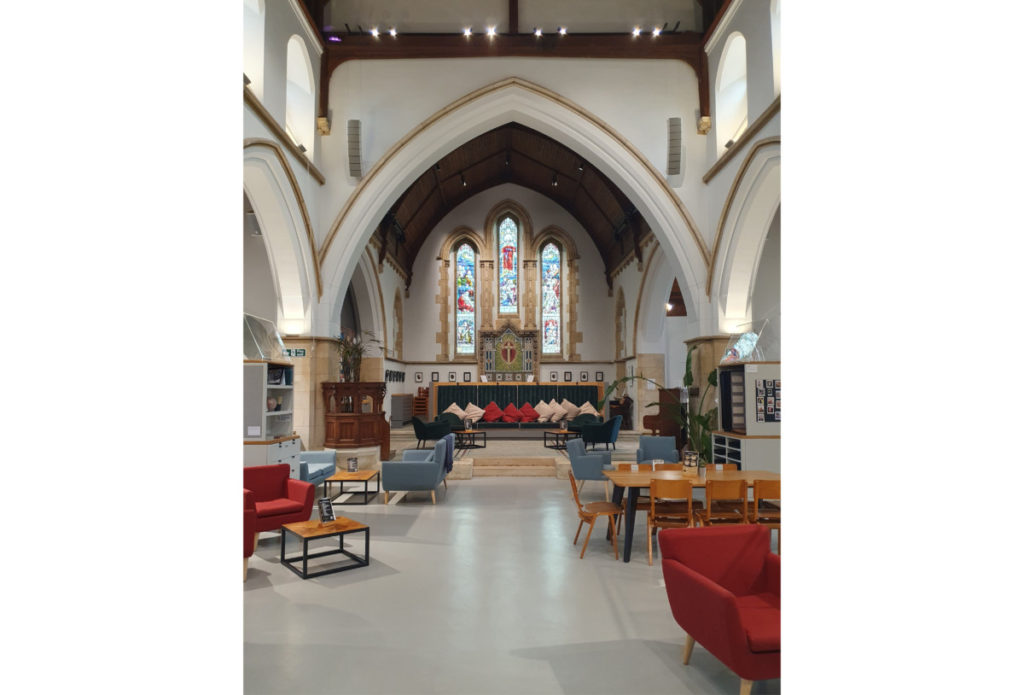
1. A clear, consistent design language
Across the various buildings there is a consistent design language that focuses on simplicity and clean lines, but also on warmth. The materials and the furnishings chosen complement the architectural moves that celebrate the heritage of the buildings, while managing to create a sense of the contemporary and of welcome. The graphic design of all of the signage and information material, of the publications and exhibitions is considered, simple, accessible and benefits from the same graphic designer being used throughout.
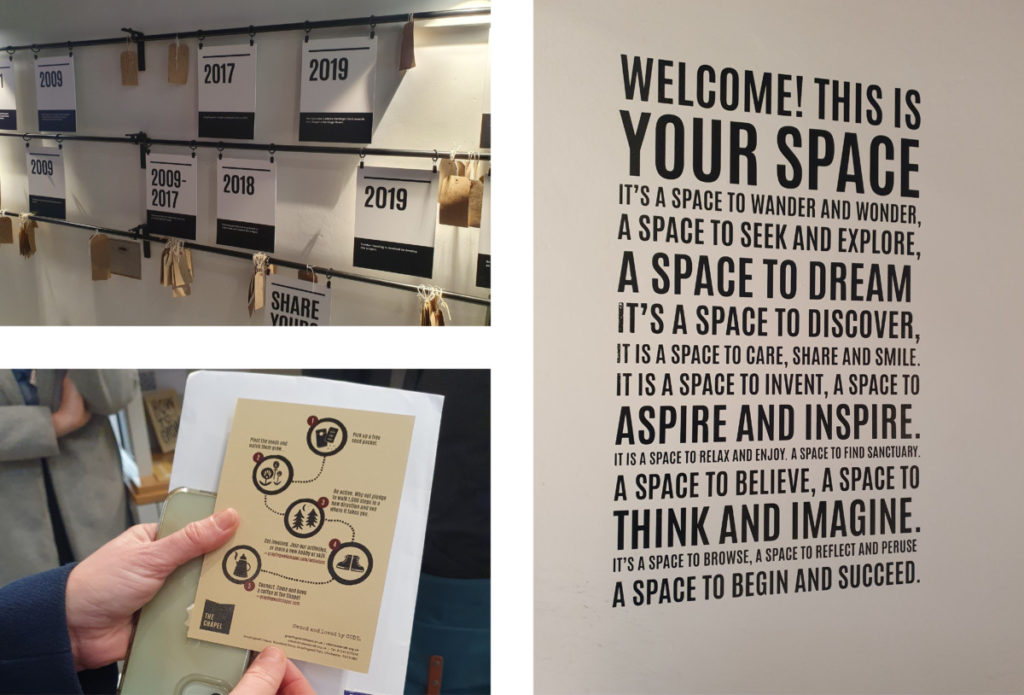
There are also some playful nods to where heritage and contemporary design meet, bringing together the original and new elements of the building, such as the internal pods, which create meeting rooms in the Chapel, sharing the same roofline as the new extension to the building. The shape of the building is also carried through to the plexiglass cases sitting at the top of the display cases.
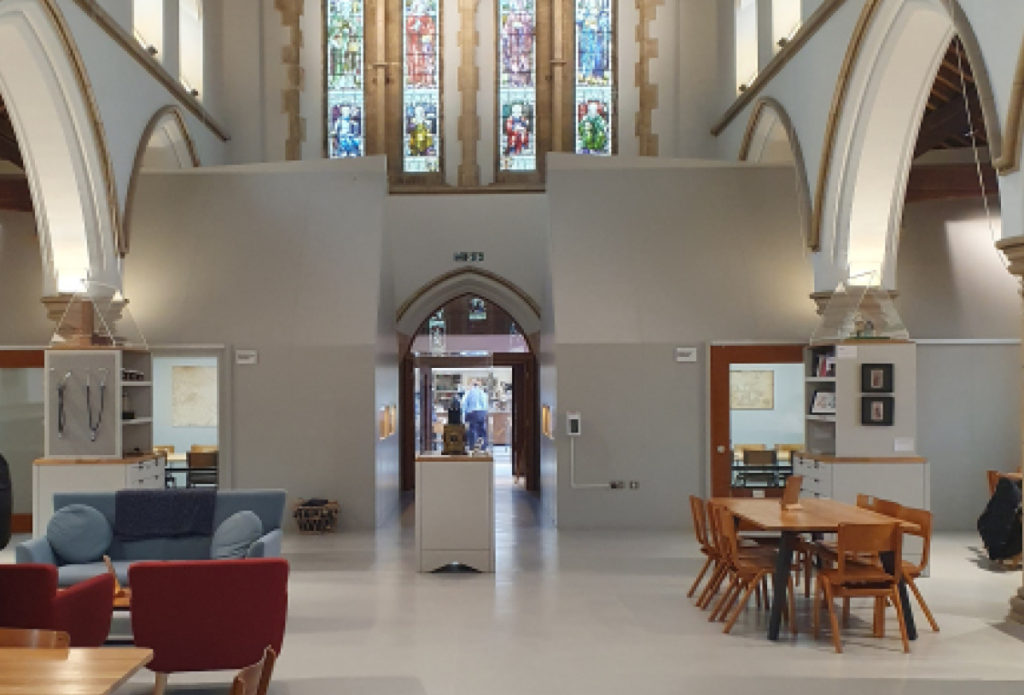
2. Curating story-telling through the design language
This beautiful graphic design also carries through in how CCDT has invited local people to share their own personal stories and to investigate the stories of the many people who came through Graylingwell Hospital.
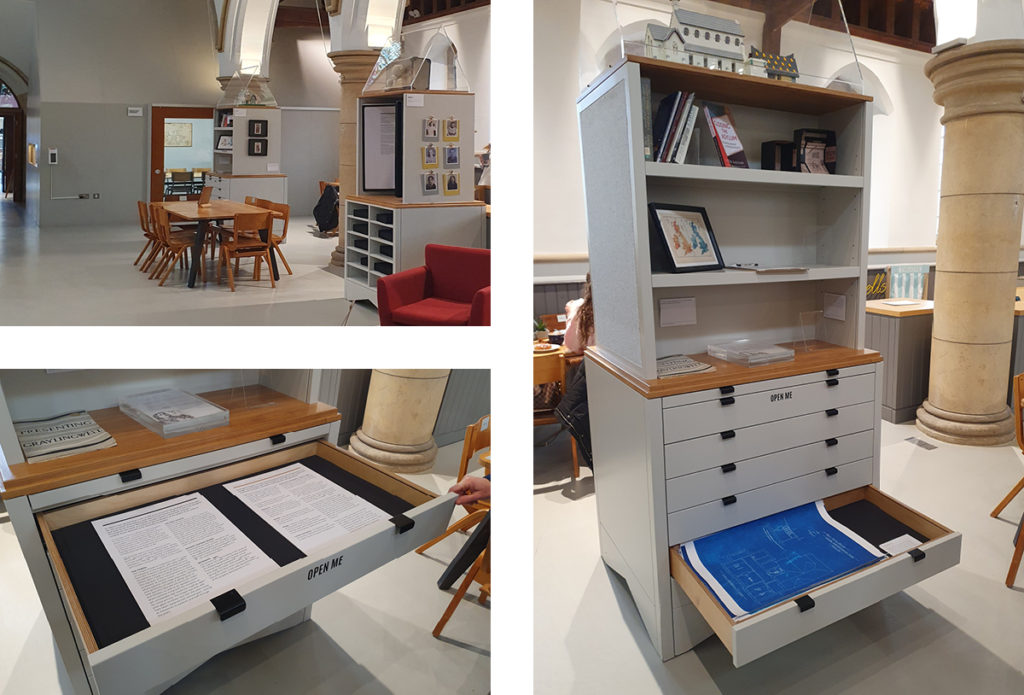
Thoughtfully curated and presented artefacts are displayed using the same design language, and in clever mobile display units that invite people to open drawers, to investigate, but that do not clutter the space or make it feel like a museum.
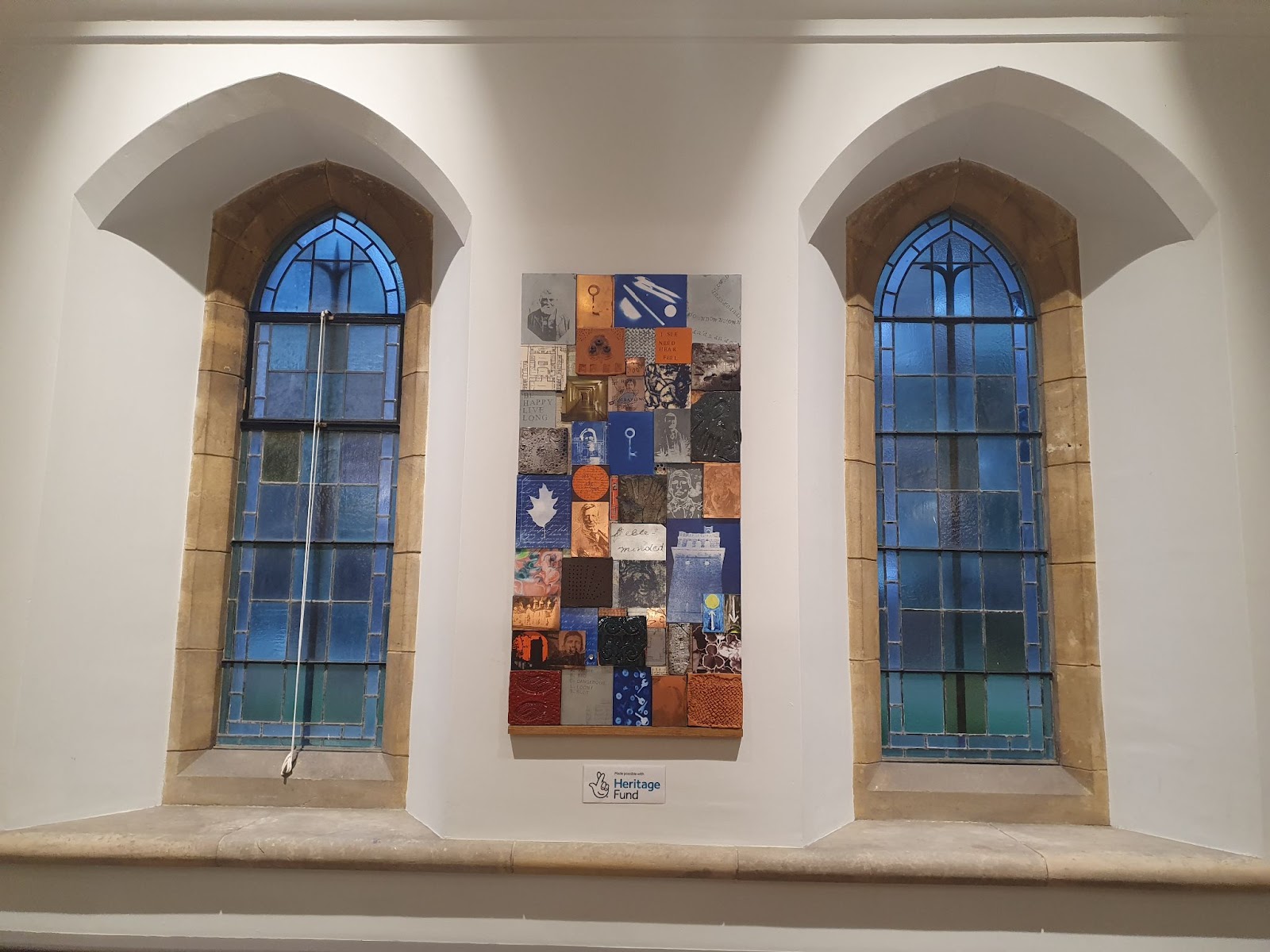
Local stories are captured through co-produced artwork that is thoughtfully hung to both celebrate and inspire.
3. Investing intelligently in design quality
CCDT has invested in getting the building right, in high quality materials, in sustainable technologies and in a considered and engaged design journey. But good design is also about knowing where to invest in top-end materials and methods, and where cost-effective solutions are just as good. Here, they have been particularly clever. There is a Scandinavian influence in the furnishings, influenced by a member of the CCDT team, but also by the use of easily available and affordable contemporary furnishings that use wood and fabric. They have also made bespoke pieces out of recycled materials, such as made to measure notice boards, that adhere to their design language better than more expensive, off-the shelf products.
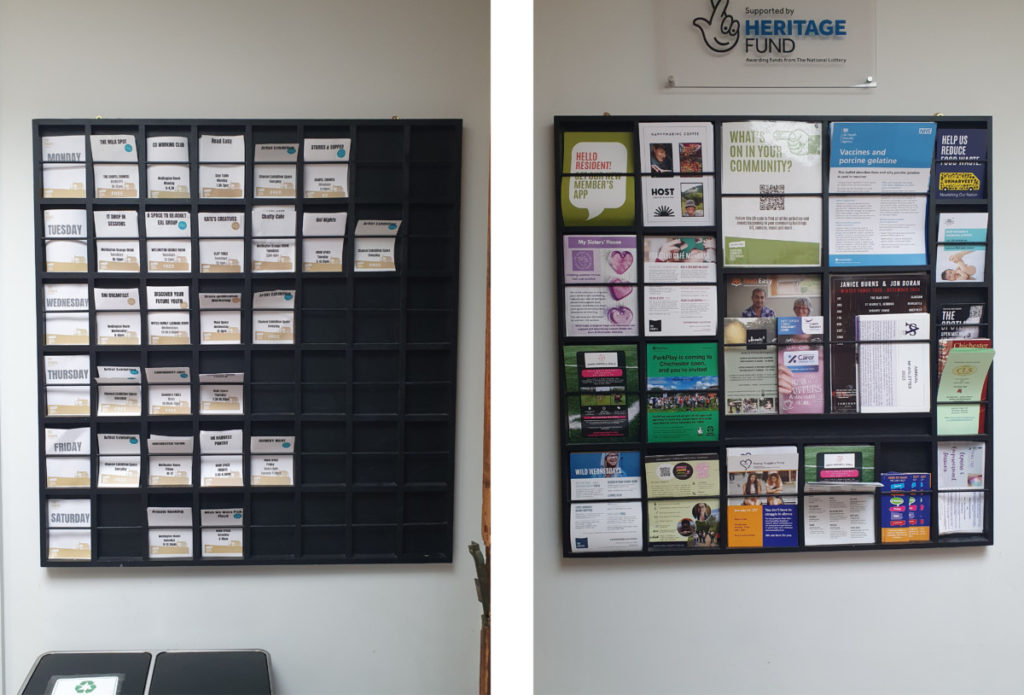
CCDT has also recycled materials, finding new uses and homes for elements that came out of the Chapel during its refurbishment. My favourite example of this is the reuse of light fixtures which were not original to the Chapel, but still rather beautiful, which have now been used in other buildings as a recurring design element.
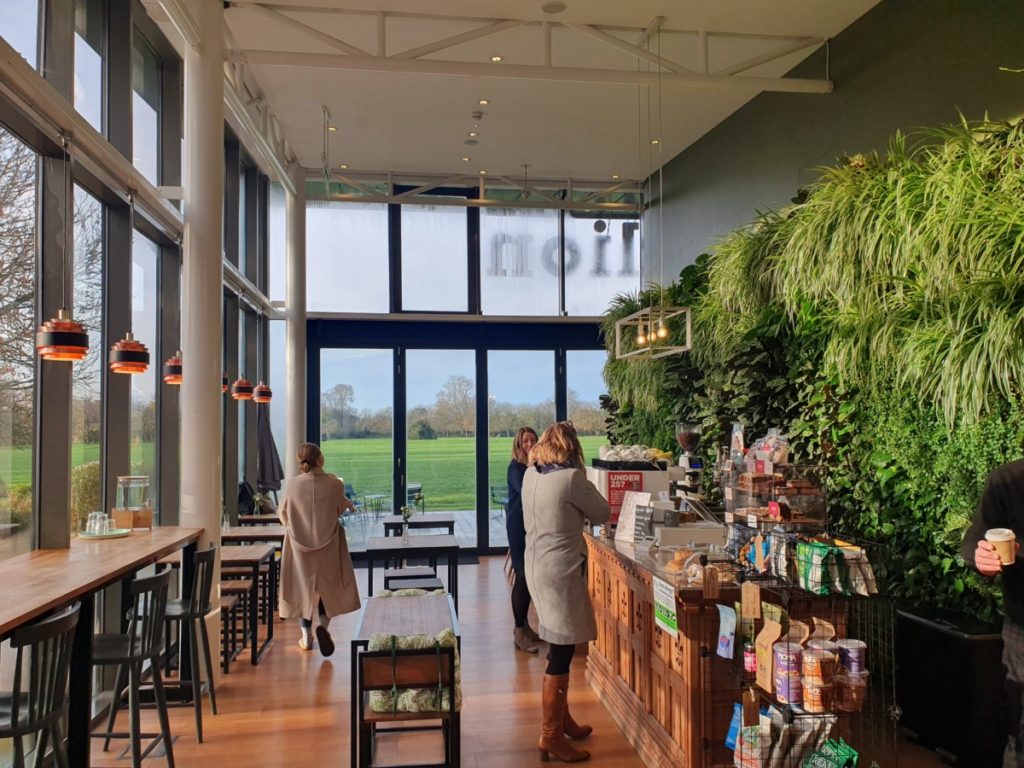
4. Prototyping uses of spaces
The Graylingwell site has a large array of buildings and spaces, which CCDT has gradually reactivated through an iterative approach. This is not about developing a grand masterplan covering the whole site and all of the assets in one fell swoop, but instead testing and prototyping uses for existing buildings both before and while they bring them back into use. They have a clear strategy of managed experimentation, testing both activities and spaces, and forming partnerships to do so. Once there is a clear fit between a space and a function that has passed their 2-year viability test, they find appropriate delivery partners to take on the space and to manage it, or make smaller spaces available to local micro-businesses and sole traders. Their strategy is not just about revitalising buildings, but about addressing local needs and helping to build the local economy as well as a sense of community through their activities.
I left Chichester feeling absolutely impressed and inspired by what Chichester Community Development Trust has already achieved and what is in their pipeline. Rarely have I seen such a strategic approach to design across a site that has developed over time and is still changing. We would strongly encourage people to go to Chichester for a visit. CCDT is keen to share their story and to help others as much as they can.
In August, Chichester Community Development Trust wrote a blog for us to share some of their top tips, which you can read here.

